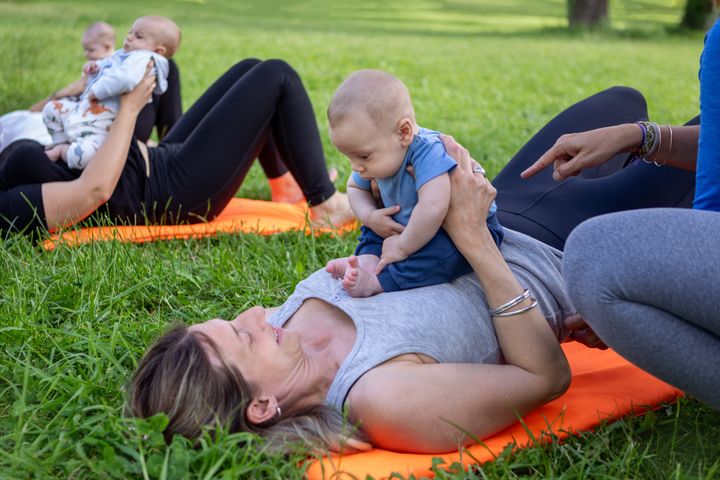
Let’s face it, a c-section is major abdominal surgery which requires a certain amount of downtime, though this can be difficult with a newborn, taking the time out to rest is vital.
Every birthing parent’s recovery is unique and should never be compared, some parents heal faster than others, whereas others take a bit longer. Either way it depends on your own body and it’s best to take things at your own pace.
The pressure to “bounce back” and be up and running is even higher now that we have social media and see all these parents returning to “normal life”, some might even be sharing their pilates regime just weeks after birth!
But when should YOU start exercising?
Well, Hollie Grant, pre and postnatal specialist, founder of The Bump Plan and mother who has had two caesareans herself, says this is the time to listen to your body.
When should I start exercising after a c-section?
Hollie says that as new mums, we get very little rest and very little rehab aftercare after a c-section.
Parents need to remember to take their time and listen to their body before they jump straight back into your old exercise regime.
Although traditionally people have felt they must wait until their six week check up with their GP before exercising, the guidance is actually to start moving your body as soon as it feels comfortable to do so.
Holly says, “Physical activity can make a real difference to your postpartum mental health, as well as your physical health, so I really would try to carve out the time to move your body if you can.”
But, in her own experience, she advises parents to stay on top of the pain relief as it can be easy to feel OK and then overdo things.
“I say this with previous experience. During my 1st caesarean, I developed sepsis and, given the sheer volume of medication I had to take, I chose to reduce my pain relief too early and it’s very hard to play catch up.
“Remember though that pain relief will mask the pain (obviously), and it can be easy to overdo things when you forget what your body has been through. It really is a balancing act,” she said.
Despite this, you want to make sure that you are still moving around post c-section, even if it’s the last thing you want to do, as this reduces your risk of blood clots, and getting up and walking around your home is important.
What exercises can I do after a c-section?
Hollie recommends you can start reintroducing your pelvic floor exercises in these early days.
For some this may be earlier than this six-week mark, for others it may be later!
Within the first few weeks post c-section, Hollie says you can start to think about adding in some gentle stretching to your day.
“We spend so much of our day as new mums hunched over; feeding, cuddling, changing nappies etc, and this can get very uncomfortable. Some gentle stretches, that put your body in a different position for once, can be really effective.
“Listen to your body and if it’s a comfortable stretch you’re all good. If however, you find your scar is sore or looks more red or angry post-stretching, you may want to scale things back slightly.”
Breathwork is also really helpful in those first few weeks, she adds.
This can help to stimulate your parasympathetic nervous system (the one that calms the body down), and naturally stimulate your pelvic floor and deep core muscles.
“To do this sit comfortably, relax your face, and close your eyes. Inhale, and as you do so imagine the breath making its way to the very bottom of your lungs whilst your ribcage expands in all directions. Pause for a moment, and then as you exhale imagine emptying your lungs fully. Repeat for 10 or so breaths and then relax,” Hollie explains.
Another simple exercise you can do is walking! This can be short distance with your baby in the pushchair. You can slowly increase the distance as you start to feel better.
Eventually you can build this up to running, and going up hills.
The NHS recommends that although you can start walking and stretches when you feel able, waiting until your six week check is important before you start high impact exercises.
It’s extremely important to build back up to normal physical activity postnatally, says Hollie: “As someone who had a traumatic emergency caesarean the first time around I know how fragile and broken you can feel postnatally.”
Exercise can help you feel strong and capable, so c-section parents, you’ve got this! Just put one foot in front of the other.